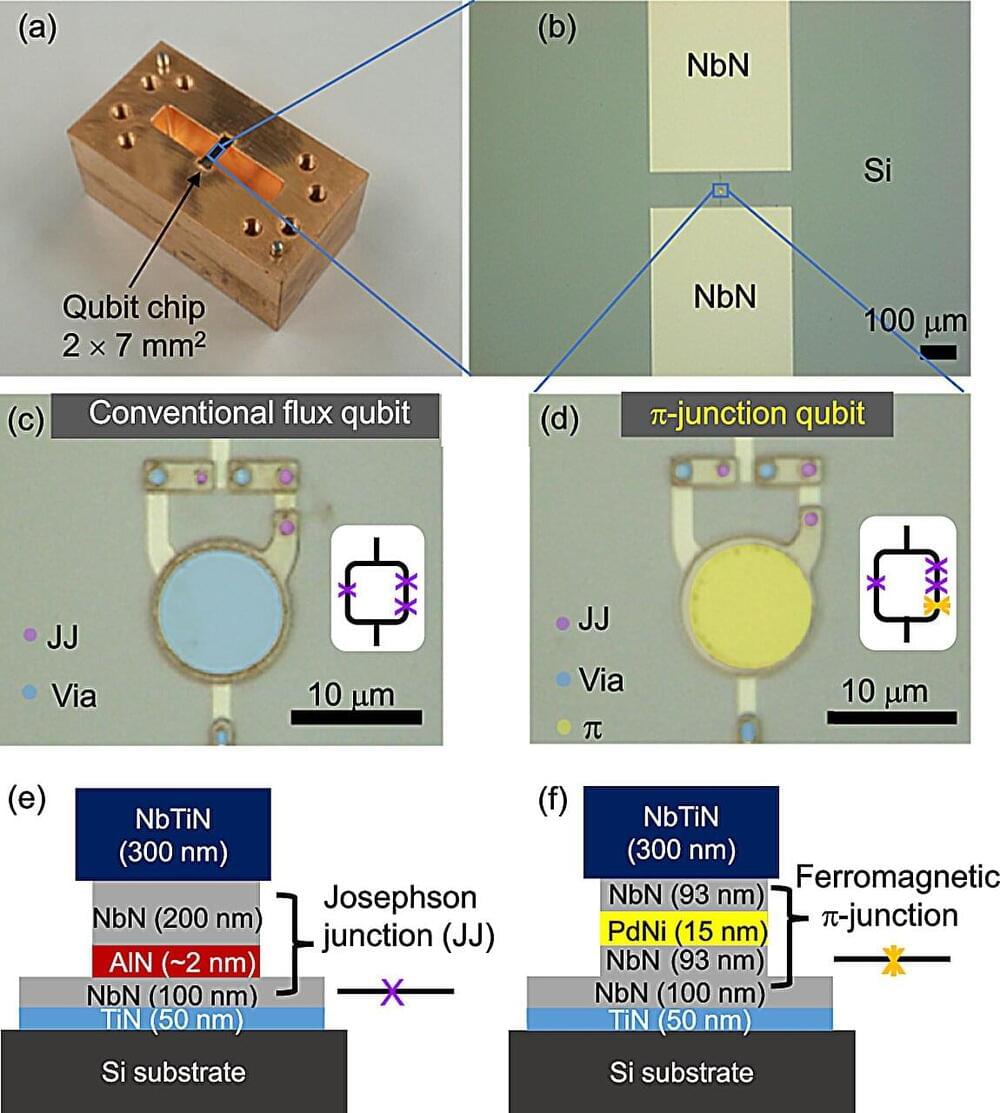Quantum defects have the potential to act as ultra-sensitive sensors that could offer new kinds of navigation or biological sensor technology.



In their previous research, Mak and his colleagues engineered a highly tunable moiré Kondo lattice system based on MoTe2/WSe2 moiré bilayers. This material offers a unique opportunity to examine the Kondo destruction transition in a continuous manner, which has proved highly challenging in bulk heavy fermion materials.
“With this background, our Nature Physics paper studied the fate of the heavy fermions by continuously tuning the density of the itinerant carriers in the system, which tunes the effective Kondo coupling strength,” said Mak. “Near a critical density, we observed a destruction of the heavy fermions and the simultaneous emergence of a ferromagnetic Anderson insulator.”
As part of their new study, the researchers examined the Kondo lattice physics emerging in the moiré semiconductor: angle-aligned MoTe2/WSe2 heterobilayer presented in their previous paper. Their results highlight the promise of moiré Kondo lattices for studying the Kondo destruction transition using a tunable platform, as well as the possibility of realizing other exotic states of matter near such transition.

When driving though a bank of fog, car headlights are only of limited help as the light is scattered by the water particles suspended in the air. The situation is similar when you try to observe the inside of a drop of milk in water or the internal structure of an opal gem with the help of white light. In all these cases, multiple light scattering effects prevent examination of the interior.





First coherent picture of an atomic nucleus made of quarks and gluons.
For the first time, quarks and gluons were used to describe properties of atomic nuclei, which until now had been explained by the existence of protons and neutrons. The temporary pair of correlated nucleons is highlighted in purple. (Source: IFJ PAN)
The atomic nucleus is made up of protons and neutrons, particles that exist through the interaction of quarks bonded by gluons. It would seem, therefore, that it should not be difficult to reproduce all the properties of atomic nuclei hitherto observed in nuclear experiments using only quarks and gluons. However, it is only now that physicists, including those from the Institute of Nuclear Physics of the Polish Academy of Sciences in Cracow, have succeeded in doing this.
It’s almost a century since the discovery of the main components of atomic nuclei: protons and neutrons. Initially, the new particles were considered indivisible. In the 1960s, however, there was a suggestion that, at sufficiently high energies, protons and neutrons would reveal their internal structure – the presence of quarks constantly held together by gluons. Soon afterwards, the existence of quarks was confirmed experimentally. It may therefore seem surprising that, despite the passage of many decades, no one has been able to reproduce with quark-gluon models the results of nuclear experiments at low energies when only protons and neutrons are visible in atomic nuclei. This long-standing deadlock has only now been broken, in a paper published in Physical Review Letters. Its main authors are scientists from the international nCTEQ collaboration on quark-gluon distributions, including those from the Institute of Nuclear Physics of the Polish Academy of Sciences (IFJ PAN) in Cracow.

ORNL’s breakthrough boosts 3D-printed turbine blades, reducing carbon emissions.
Researchers have made significant efforts to enable additively manufactured turbine blades to better handle extreme temperatures. They have developed and 3D printed the lightest crack-free alloy capable of operating without melting at temperatures above 2,400 degrees Fahrenheit.
The milestone was achieved by researchers at Oak Ridge National Laboratory (ORNL) and the National Energy Technology Laboratory (NETL).
The alloy is expected to enable additively manufactured turbine blades to effectively handle extreme temperatures and reduce the carbon footprint of gas turbine engines such as those used in airplanes.